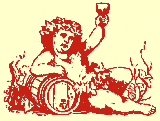|
Helpful hint: click on photos for even more information!
Who better to talk to about Italy’s favorite bubbly, Prosecco, than Klaus-Jurgen Kuerten, a German who makes his own wine in the Rheingau?
The 60-year-old father of three, 45 years in the wine biz, knows more about sparkling wine than anyone in Europe as export director of Henkell & Co of Wiesbaden, one of the most prestigious European sparkling wine producers and brand ambassador for Mionetto, currently making a big splash across Canada.
Light, lively and easy drinking with delicate fruit and almond flavors, Mionetto is a leading Italian brand that’s known as the Orange Label of Prosecco. I guess that makes Veuve Clicquot the Mionetto of Champagne!
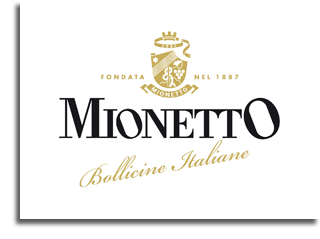 New in the SAQ and selling out the door in North America, Mionetto is a big part of the exceptional growth in the sparkling category across Canada and worldwide. In Ontario, the Mionetto Prosecco Treviso DOC is $18.15 and Mionetto Il Prosecco is $13.95. New in the SAQ and selling out the door in North America, Mionetto is a big part of the exceptional growth in the sparkling category across Canada and worldwide. In Ontario, the Mionetto Prosecco Treviso DOC is $18.15 and Mionetto Il Prosecco is $13.95.
Typically, light straw in color with bright yellow highlights. Aromas of golden apples, citrus, pear, melon and honey. Well-balanced light and fruity acidity provides a fresh and lively mouthfeel with a clean dry finish, 11% alcohol. Pairs easily with seafood, shellfish, and most cheeses.
A self-styled “success born in 1887” amid the rolling alluvial-clay hills of Valdobbiadene and a flagship for the Treviso region, close to Venice, it’s owned today by Henkell yet it remains resolutely Italian. Just 30k from the Adriatic, below the towering Dolomites, the area’s home to international brands like Benetton, Diadora, Delonghi and, of course, tiramisu!
According to Klaus, the driving force behind the sudden global success of Prosecco is – women: “The drink is stylish, it’s affordable, light and easy to pronounce. Pro suggests something good and secco suggests dry, which is what people want.
“Modern women have financial independence and tend to drink wine rather than beer, shots or spirits, and there you have it!”
Prosecco’s beautiful vineyards are a magnet for tourists, only an hour from Venice. “It’s been like the waves from a stone dropped in a pond: visitors from neighboring Austria, then Switzerland, then Germany took Prosecco back home and it spread from there. To the US and the UK and Canada. And it’s huge in France, too.“
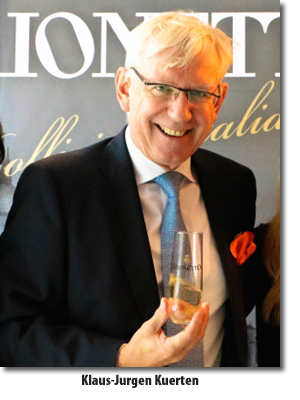 Klaus adds that Prosecco is easy to understand: “there’s just the one grape, 100% Glera, and the flavor profile is consistent, unlike the complexity of Champagne, which is also more acidic, with its three grape varieties, its terminology, and many styles including rosé. Klaus adds that Prosecco is easy to understand: “there’s just the one grape, 100% Glera, and the flavor profile is consistent, unlike the complexity of Champagne, which is also more acidic, with its three grape varieties, its terminology, and many styles including rosé.
“The great thing is to drink Prosecco fresh and young. It’s not made to improve with age,” says Klaus, who also looks after Henkell’s “Pearls of Europe” – the company’s collection of fine sparkling wines made across Europe.
“In Italy, they drink Prosecco like water! It opens the meal and matches almost any kind of food. The only dish I don’t think it goes well with is the heavy barbecued meats they cook over open fires in northern Italy: there, they tend to use a hefty red made from a local grape they call Rubino (my guess is that’s alias Teroldego).”
Founder Francesco Mionetto got his start by bottling and selling wines made from the delicate Glera grapes (then called Prosecco) to the locals.
After World War I, the winery was unattended until grandsons Giovanni and Sergio Mionetto took over in 1961 and began rebuilding.
In 1982, they switched to modern Charmat temperature-controlled steel tanks for the second fermentation (to create the bubbles), which better preserve the delicate flavors and aromas.
Most vineyards are tiny and it’s a challenge to maintain relationships with 80 growers. Mionetto is fortunate to have relationships that date back generations.
Trivia notes: Mionetto’s bottle label tilts at 27 degrees: exactly the gradient of the vineyards’ rolling hills! And there are 11 vowels in its DOCG area: Conegliano-Valdobbiadene!!!
By the way, Klaus’s native Henkell Trocken has been imported into Canada since (wait for it!) 1876. And when his countrymen weren’t making great bubbly in Germany back then, they were making it in the heart of Champagne: the names Krug, Mumm, Deutz and Taittinger come to mind!
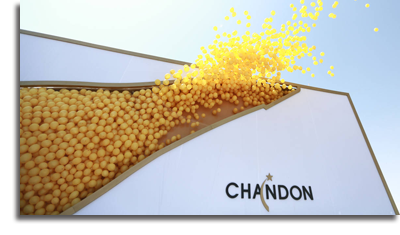 Sparkling wine isn’t sweet enough for Chinese tastes, says Claudia Masueger, founder of Cheers, a chain of wine stores throughout China. People often add Coca-Cola “to make it drinkable,” she says. Now, though, young, affluent consumers are buying it. Sparkling wine isn’t sweet enough for Chinese tastes, says Claudia Masueger, founder of Cheers, a chain of wine stores throughout China. People often add Coca-Cola “to make it drinkable,” she says. Now, though, young, affluent consumers are buying it.
Sparkling consumption in China is less than 1% of still wine.
In the US and Canada, the figure is about 5% and growing, and in Japan, France, and Britain, it’s 10%, says Chuan Zhou of Wine Intelligence, a market-research firm in London. “There’s still a long way to go to persuade Chinese to try it.”
Champagne powerhouse LVMH (Moet & Chandon), is counting on China to become a major growth market. After more than doubling vineyard acreage since 2000, China has more land growing grapes than France and its wine market will be worth $22.3 billion, according to Euromonitor International.
LVMH’s sparkling is made by Domaine Chandon (Ningxia) Moët Hennessy, a partnership with the government of Ningxia in north central China.
To win over Chinese drinkers, the company is tweaking its formula, says Davide Marcovitch, president of LVMH subsidiary Chandon, which makes sparkling wines in Argentina, China, and other countries. “We’re innovating for consumers who don’t like the traditional taste of Chandon,” he says.
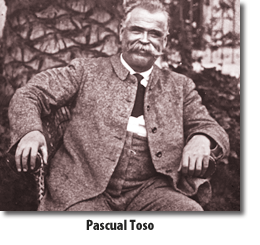 Forget about Argentina being a New World wine region! Pascual Toso got things rolling there way back in 1890 as a young Italian immigrant from Piemonte who would establish one of Argentina’s most prestigious and ambitious wineries. Forget about Argentina being a New World wine region! Pascual Toso got things rolling there way back in 1890 as a young Italian immigrant from Piemonte who would establish one of Argentina’s most prestigious and ambitious wineries.
The winery today produces a wide variety of wines including top-notch Malbec and Cabernet Sauvignon ranging from unique single-vineyards to easy-drinking table wines – about 7,000,000 litres a year with exports of $1.5 million.
To mark its 125th anniversary, the winery has just released an exciting new range of wines called Pascual Toso Barrancas Vineyards Reserva, including a recently tasted 2013 100% Cabernet, complex and fresh, with ripe plums and black raspberry fruit that’s as modern and international as any you’ll find. A wine with black berry fruit and jam character, full-bodied with smooth tannins and a fruity finish. It’s very well priced at $19.95 at Vintages.
No surprise about today’s international style: Toso’s wines are crafted with help from California consulting wine guru Paul Hobbs, who’s been guiding Toso since 2002 and that’s a good thing.
In the ’70s and ’80s, Argentina realized that its 90-litre-a-year native wine drinkers were moving on to beer and soda pop instead, and wine sales were dipping. They also realized that the rather rustic local style of wine aimed at the domestic market wasn’t going to cut it globally. Changes had to be made and they were!
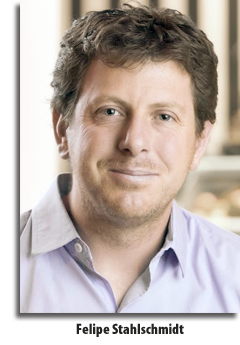 One fundamental improvement was to totally upgrade the ancient Toso winery itself: “We think of it as an old Chevy with a brand-new Mercedes engine,” says Felipe Stahlschmidt, head winemaker, whose own roots are almost literally in the estate vineyards thanks to his Master’s degree in viticulture and enology. One fundamental improvement was to totally upgrade the ancient Toso winery itself: “We think of it as an old Chevy with a brand-new Mercedes engine,” says Felipe Stahlschmidt, head winemaker, whose own roots are almost literally in the estate vineyards thanks to his Master’s degree in viticulture and enology.
Toso’s Las Barrancas estate, in Maipu, extends over 1,000 acres of mainly rocky soils at an altitude of 750m above sea level and everything is dependent, among other things, on careful irrigation.
Barrancas are cliff outcrops on the desert flatlands and the climate is very consistent through the year, mainly influenced by the El Niño coastal water warmings and their effect on the seasons. Grapes here are easy to ripen and yield soft tannins with attractive fruit flavors in easy-drinking wines that are generally midweight and lightly oaked except for the top blends.
“I believe great wines represent the terroir of their vineyard. Our wines are exuberant and full of character, a beautiful expression of what nature and humans can create when they work in harmony,” Felipe says. Paul Hobbs gets together with Felipe four times a year and they taste through all the top Toso wines to establish the potential for the finest blends and cuvées in the portfolio.
The icon wines at Toso are the Finca Pedregal (from 60-year-old Cab and Malbec vines) and Magdalena Toso (best of the best, a tribute to the mother of the founder), in the $70-$90 range that pass through Vintages occasionally in tiny quantities.
For everyday enjoyment, though, there’s an old world-style red at the LCBO called Pascual Toso Malbec for $14.15 that’s smooth and fairly complex with earthy aromas, hints of mushroom, barnyard and red berries. The Toso Chardonnay, $12.95, is almost out of stock and due to be replaced by the new vintage.
There’s also a rich and elegant premium range of single varietals handpicked and aged in new French oak barrels called Pascual Toso Alta which includes Malbec, Cabernet Sauvignon and Syrah, in the $32 range.
Toso is very much a name to watch and it’s much more than Malbec!
Argentina notes:
Please take me back to the top of the page!
Please take me back to Being There!
|

